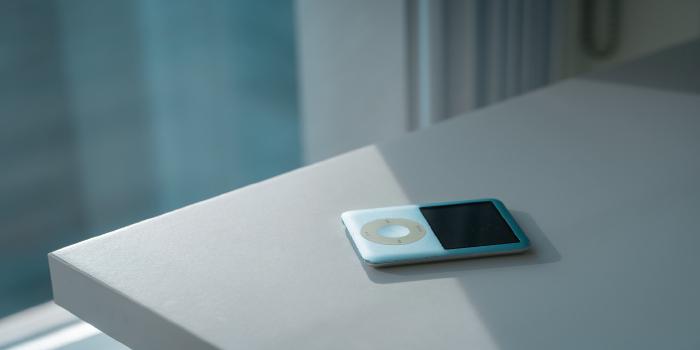Build Audio Production Environment in Manjaro Linux
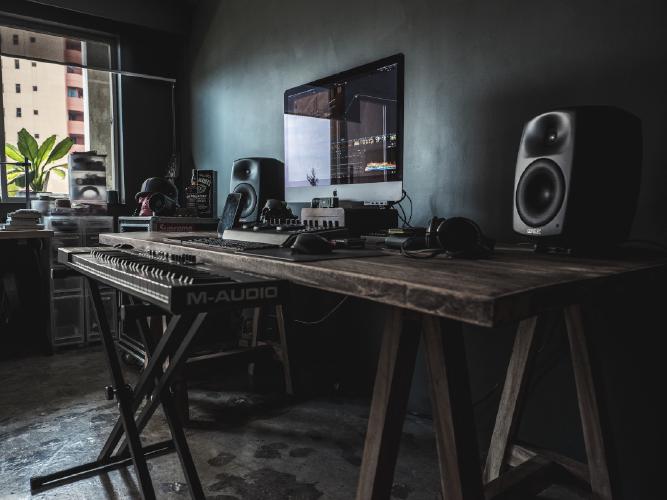
I have built an audio production environment in Manjaro Linux, which is a distribution of Arch Linux. We can just follow the procedure in the official wiki for Arch Linux. https://wiki.archlinux.org/index.php/Professional_audio
Getting Started
Install a DAW
Any DAW should be fine. I have installed Ardour.
$ sudo pacman -S ardour
Add the user to realtime Group
Although JACK is installed by default, it is not able to be run unless the user is added to realtime group.
$ sudo pacman -S realtime-privileges
$ sudo gpasswd -a USERNAME realtime
This makes Ardour work anyway.
Setting for GUI-based JACK
Minimum Configuration
https://wiki.archlinux.org/index.php/JACK_Audio_Connection_Kit#A_GUI-based_example_setup
$ sudo pacman -S jack2 python-dbus qjackctl
Exchange jack with jack2 according to the wiki. jack2 has a small advantage against jack in terms of coordination with qjackctl, which is a GUI-based JACK control tool. Open qjackctl and then check Enable JACK D-Bus interface in Setup > Misc
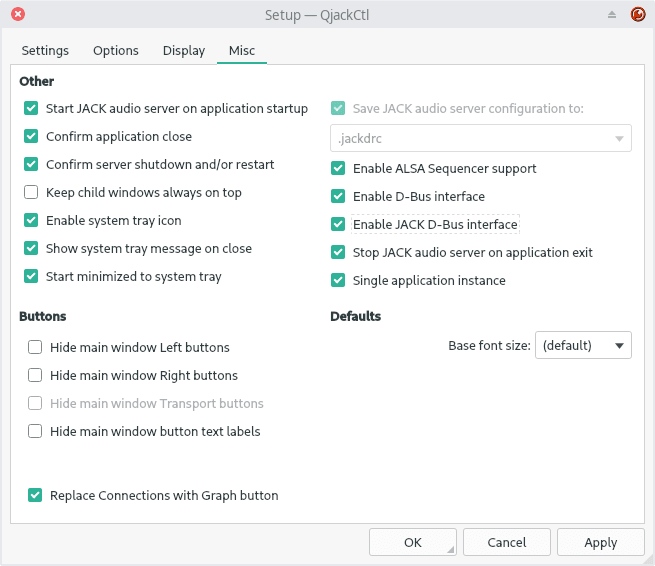
In case you want to integrate PulseAudio with JACK
Sounds from PulseAudio are not normally enabled whilst JACK is running. This is quite unuseful as sounds from applications not compatible with JACK are disable. The procedure in the following wiki makes sounds from PulseAudio enable via JACK.
https://wiki.archlinux.org/index.php/PulseAudio/Examples#PulseAudio_through_JACK
$ sudo pacman -S jack2 cadence pulseaudio-jack
As the following figure, set ALSA Audio to ALSA -> PulseAudio -> JACK (Plugin).
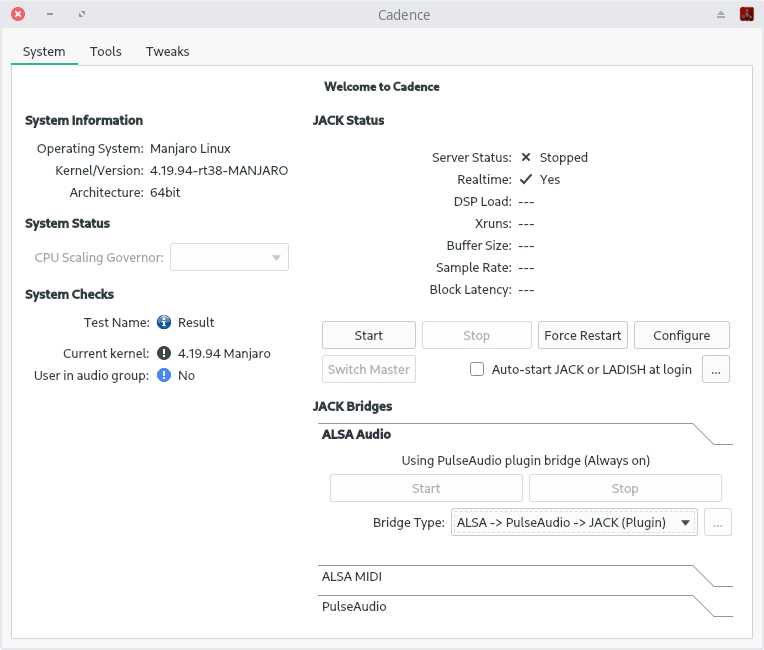
System Optimisation
Although the above procedure has already made JACK and DAW work, the following additional settings are recommended to minimise the latency.
Apply realtime Kernel
In Manjaro Linux, Kernels can be downloaded from Settings > Manjaro Settings Manager. Kernels having rt should be installed.
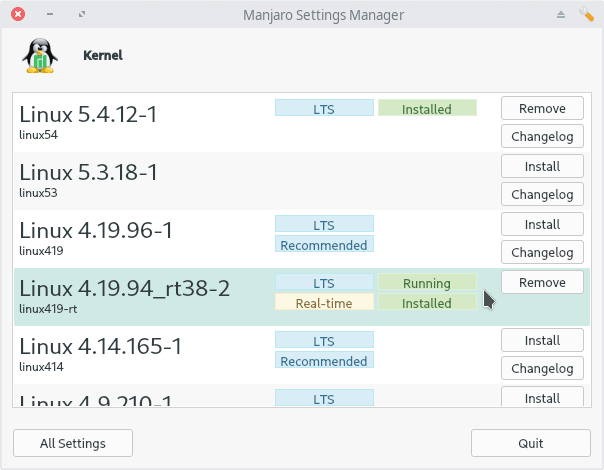
Hit Shift key continuously during booting the PC to enter GRUB to select the Kernel.
Ser Governor
Set Kernel Governer to performance.
https://wiki.archlinux.org/index.php/CPU_frequency_scaling#Scaling_governors
$ sudo cpupower frequency-set -g performance
Make the Governor setting permanent
Make the following change to set the Governor enabled at boot:
https://wiki.archlinux.org/index.php/CPU_frequency_scaling#cpupower
https://wiki.archlinux.org/index.php/Systemd#Enabling
$ sudo vim /etc/default/cpupower
# Define CPUs governor
# valid governors: ondemand, performance, powersave, conservative, userspace.
governor='performance'
Check whether the unit is enabled at or not:
$ systemctl is-enabled cpupower
If disabled, enable the unit to start automatically at boot:
$ sudo systemctl enable cpupower
Set Interrupt Frequency
Increase in the number of interruptable processes will contribute to further low latency.
$ sudo vi /etc/systemd/system/RTC_interrupt_frequency.service
echo 2048 > /sys/class/rtc/rtc0/max_user_freq
echo 2048 > /proc/sys/dev/hpet/max-user-freq
Mend Swappiness
Decrease in swappiness from 60 to 10 allows the waiting time before swap longer.
$ sudo vi /etc/sysctl.d/90-swappiness.conf
vm.swappiness = 10
Mend Maximum Watches
Increase in the maximum watches seems to make a good result as DAWs have to handle a lot of files.
$ sudo vi /etc/sysctl.d/90-max_user_watches.conf
fs.inotify.max_user_watches = 600000


